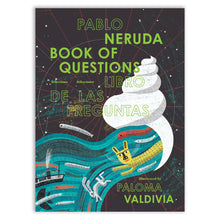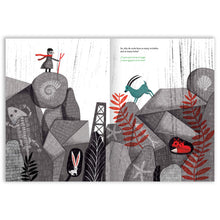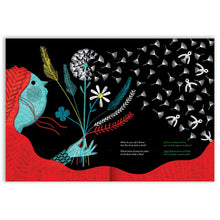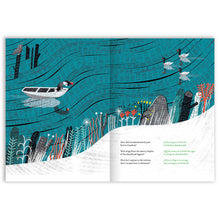★ A NYT Best Children’s Book of 2022
This Spanish-English bilingual edition is the first fully illustrated selection of Book of Questions: comprising 70 questions of the original 320, these poems, carefully woven together by theme and accompanying full-page illustrations, invite us to wonder at the natural world and the myriad mysteries it contains.
“Book of Questions,” written by beloved Chilean poet and Nobel Prize winner Neruda, was completed just months before his death in 1973, and is his last great work of poetry. By turns lyrical and cosmic, dreamlike and nonsensical, paradoxical and playful, each of these unanswerable questions asks us to set aside certainty and constraint and to enter into the vastness of the unknown. With riddles like “Where is the center of the sea? / Why don’t waves break there?” and “What do you call a flower / that flits from bird to bird?”, Neruda inspires us to unravel our assumptions and re-envision our relationship to nature. The only answer that is sure to arise from these questions is a closer observation of and reflection on the world in which we live, and a renewed sense of curiosity and wonder at our shared universe.
Illustrator Paloma Valdivia shares the same homeland of Chile as Neruda, and her art gorgeously reveals the geography of his poems, bringing to life the landscapes in which Neruda composed his Book of Questions. In scenes of expansive constellations, dancing waves, and interwoven roots, Valdivia’s art evokes the interconnectedness of the natural world. Moments of intimate encounter—between a butterfly and a rosebush, a camel and a tortoise, or a woman and a pomegranate—transcend into cosmic moments of shared connection, with animals, plants, and humans reaching out to one another and joining in the same visual language of shape. Valdivia’s colors are simply stunning: striking red, bold yellow, rich turquoise, and textured grays jump off the bright white and deep black backgrounds.
With a clear acetate jacket with striking green lettering (an homage to Neruda’s affinity for writing in green ink, which he saw as the color of hope), this edition contains six magnificent gatefold spreads that lift to reveal more questions and expanded illustrations, inviting readers into deeper and deeper reflection.








